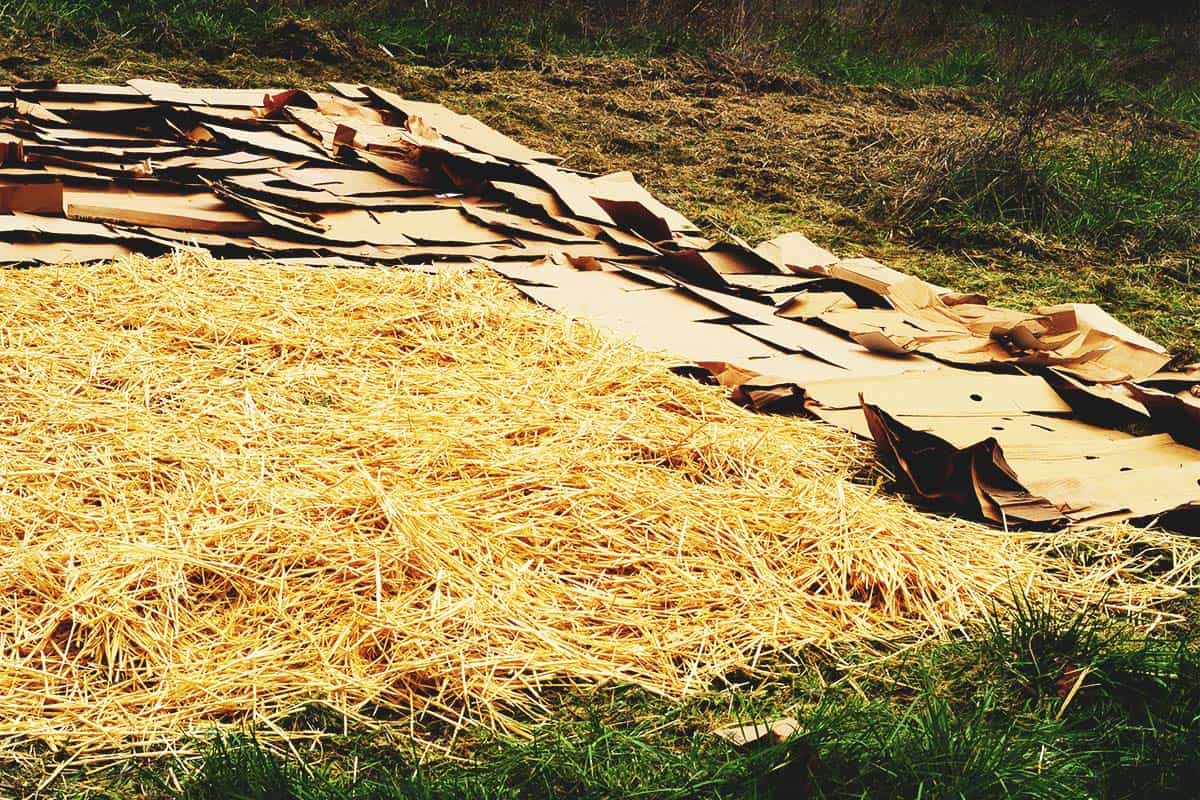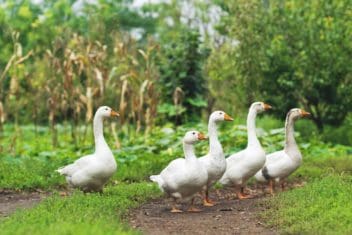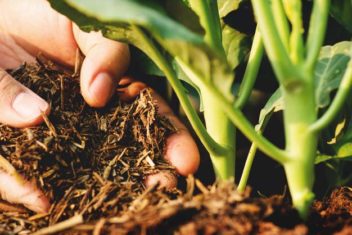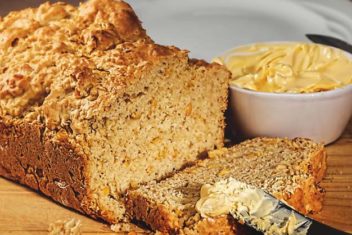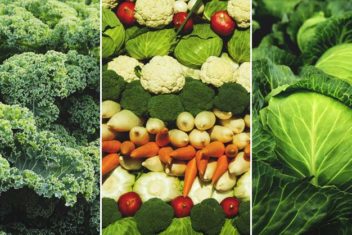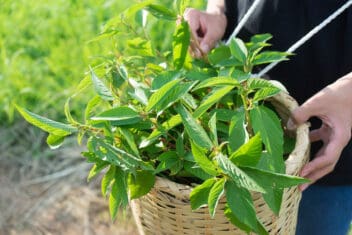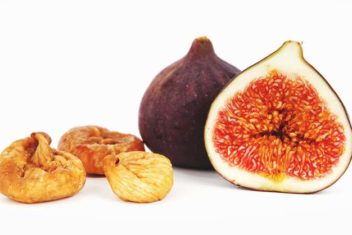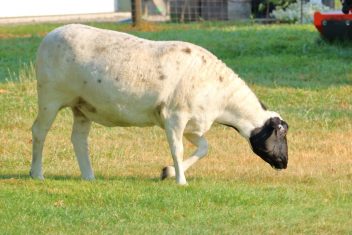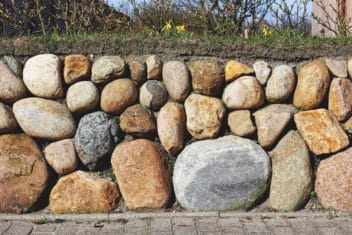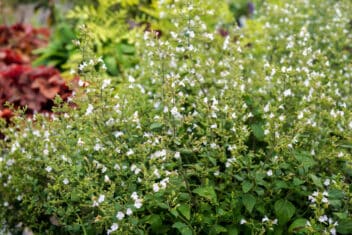The key to a healthy, productive garden is the soil; you want to have soil that is diverse and full of microorganisms. Sheet mulching is a clever way to make this happen.
Organic gardeners use sheet mulching to put more organic materials into the garden, providing more nutrients for your plants.
While it takes some time, sheet mulching requires a minimum amount of labor, and the rewards are more than worth the effort. Let’s get started.
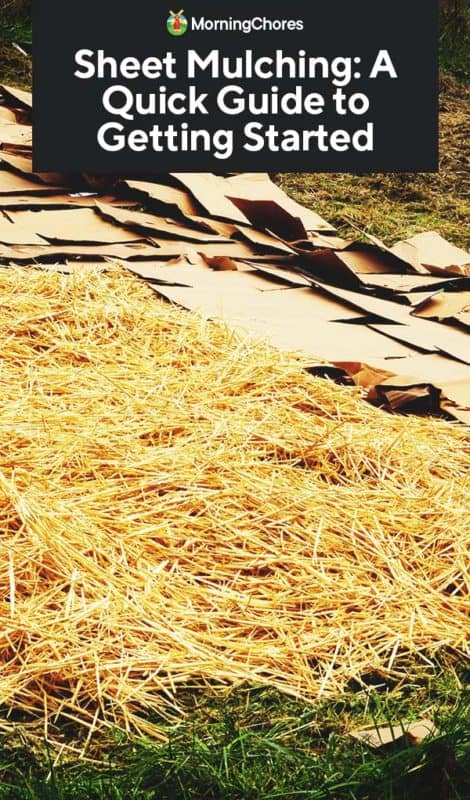
What is Sheet Mulching?
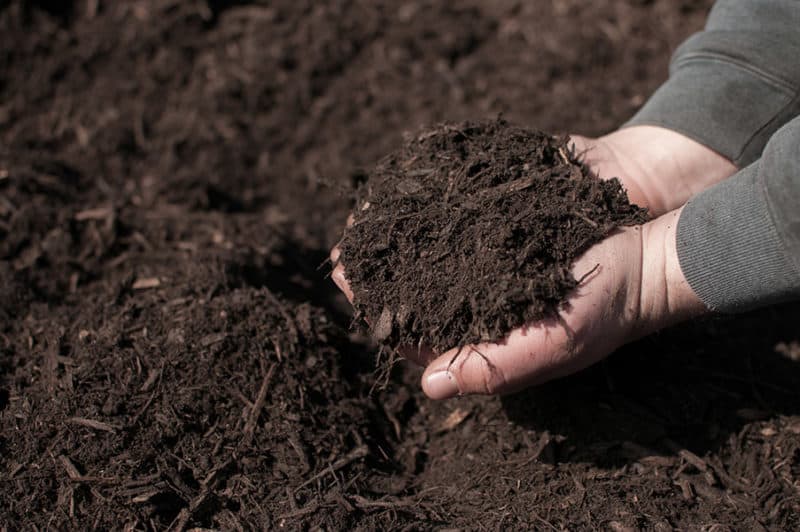
Sheet mulching, also called sheet composting or lasagna gardening, is considered a passive method of composting. Instead of composting in a bin or tumbler and then transferring the compost, you do it on the site where you want to enrich the earth.
Even though it doesn’t take a lot of active work, it takes time. Compost happens, but you have to be patient for everything to decompose. In the end, you’ll have enriched soil and a bountiful harvest.
Where to Use Sheet Mulching
Gardeners can use sheet mulching to create new and fertile gardening areas. If you want to turn your lawn or space covered with ground cover into a garden, then layering compostable materials to decompose in place gets the job done.
That’s because not only does it help add nutrients to your soil, but it also helps to suppress weeds or grass.
At the same time, you can use it to trap moisture in the ground in areas that could use a little help. Moisture is a plus when it comes to mulching because it reduces the need for irrigation.
Sheet mulching also creates a good environment for the earthworms in the ground. Worms love cardboard and compost. They like to munch on it, pooping out extra nutrients.
You can also use sheet mulching to prep an existing space for next year’s crops.
When to Start Sheet Mulching
Compost wasn’t built in a day, which is why sheet composting needs to be done months in advance. You shouldn’t be able to recognize any of the materials you’re using in your compost by the time you’re ready to plant.
Since decomposition takes time, it’s best to start sheet composting in the area in the fall before you want to grow in that area. Plan for it to take six months or longer to decompose.
Another choice is to plant on top of the sheet mulching. You can start your garden by moving 2-3 inches of compost or soil away and plant directly into the lasagna garden. Some gardeners swear that this method works the best!
When you plant into the sheet compost, the roots will grow down into the mulch and all of the layers below. That lets them tap into all of those nutrients as they decompose.
At the same time, everything continues to decay, and the decomposition process keeps tender seedlings and seeds warm as they germinate and establish.
How to Start Sheet Mulching
The great thing about sheet composting is that it’s so simple! The steps are easier than you might think.
1. Gather the Right Materials
You have some creative freedom when it comes to what materials you use, and the quantity needed will depend on how big of a space you want to cover. Some of those materials you might want to use are:
- Corrugated cardboard boxes
- Newspapers
- Finished organic compost
- Organic matter
- Manure
These are just a few examples. You can recycle and use anything you have on hand or whatever you find for free that can decompose. Ask your neighbors to save newspapers or ask stores for cardboard.
Keep in mind that some things like cotton fabrics take time to decompose. Even still, don’t forget about towels, clothing, or burlap sacks and just give yourself some extra time.
Other materials that you might want to use include:
- Lawn clippings
- Shredded leaves
- Shredded plant trimmings
- Coffee grounds
- Tea leaves
- Straw bales
- Sawdust
2. Prepare The Area
Water the area that you want to cover. You also need to cut the plants or grass on the site down to the ground.
It’s important not to remove the vegetation in the area because it acts as food for decomposers. You should, however, remove woody stumps or large pieces that won’t decompose in time for the spring.
Use a rake or fork to break up the area if its compacted or if you have clay soil. Rock the spade back and forth to open up holes in the ground. Ideally, you don’t want to turn the soil because it disrupts the natural ecology; you just want to open it up.
3. Amend the Soil as Needed
This is a smart time to amend the soil and to increase its fertility. If the soil is too acidic, you can sprinkle the area with lime. You can improve alkaline soil with sulfur or gypsum.
4. Put Down the First Materials
Put a thin layer of nitrogen-rich materials over the area. Try fresh grass clippings, finished compost, blood, or cottonseed meal. By adding nitrogen-rich materials, you can encourage earthworms, beetles, and other invertebrates.
Then, cover the area with a layer of newspaper. Make sure not to use any glossy paper, and remove any staples or tape. You want to create a layer that blocks the light to smother out weeds.
Now, add a layer of finished compost or more nitrogen-rich materials over the top of the newspapers. Make sure you wet the materials as you build up the sheet mulch. You can continue to apply layers up to several inches thick.
5. Lay Down the Cardboard
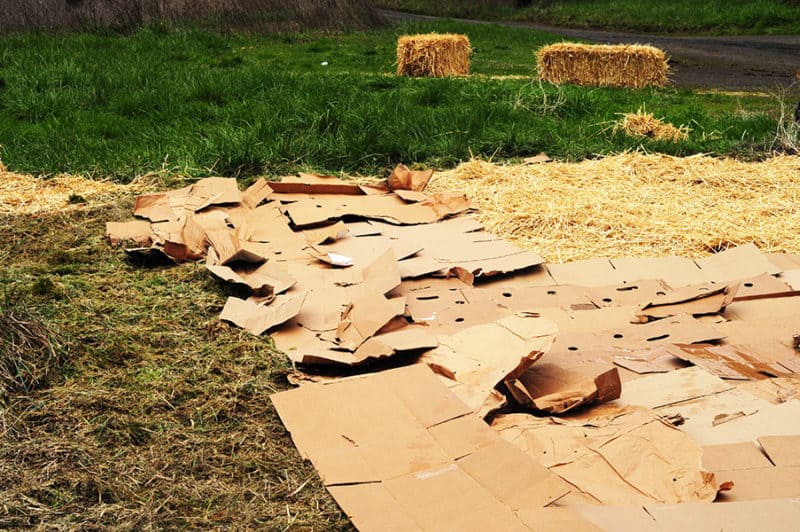
Now, add cardboard on top of the compost or other green materials. Before you lay down the cardboard, make sure you remove tape, staples, or plastic that are attached.
Overlap the edges liberally and wet down the cardboard as you continue to create the layers. You’ll want to overlap the pieces of cardboard by six inches to stop any weeds from coming through the gaps to the surface. If that happens, they’ll establish themselves in the compost.
Wet down the cardboard layer once it’s in place. Wet it until it becomes heavy and limp, which ensures it doesn’t shift around or blow away. Also, the layers need to stay moist, so this helps.
6. Add Carbon-Rich Materials
Now, it’s time to add carbon-rich materials in a layer up to six inches deep. You can use a variety of carbon items, such as fresh or soiled straw, stable sweepings, yard waste, shredded leaves, pine needles, or chipped bark.
7. Water Weekly
Finally, your sheet mulch needs to be watered once a week if it doesn’t rain that week or if you’re sheet mulching during a time when rain is uncommon in your area.
6 Tips for Sheet Mulching
1. Keep It Simple
While these steps might seem a bit complicated, it truly is simple. Sheet composting takes three layers: cardboard, compost, and straw. You don’t need to make it more complicated than it has to be.
2. Don’t Limit Yourself
Compost isn’t cheap, and you might need to be creative with what you put into the layers. It can be fun to figure out what can break down to make your compost.
Always remember to alternate layers of nitrogen (green) materials with brown (carbon) materials. That’s similar to what you do in a regular compost pile.
3. More Carbon Than Nitrogen
You must have more carbon materials than nitrogen. The ideal ratio is 3:1 carbon to nitrogen. So that means you need three times the amount of carbon that you have nitrogen.
4. Keep The Layers Thin
Another essential tip to remember is to keep your layers thin, making them 3 inches at most. That allows each layer to break down faster.
You should think about shredding the materials first, especially leaves because they’ll mat together, creating a thick, slimy layer that doesn’t decompose fast. You also need to tear large items like cornstalks.
5. Cover If It Becomes Too Wet
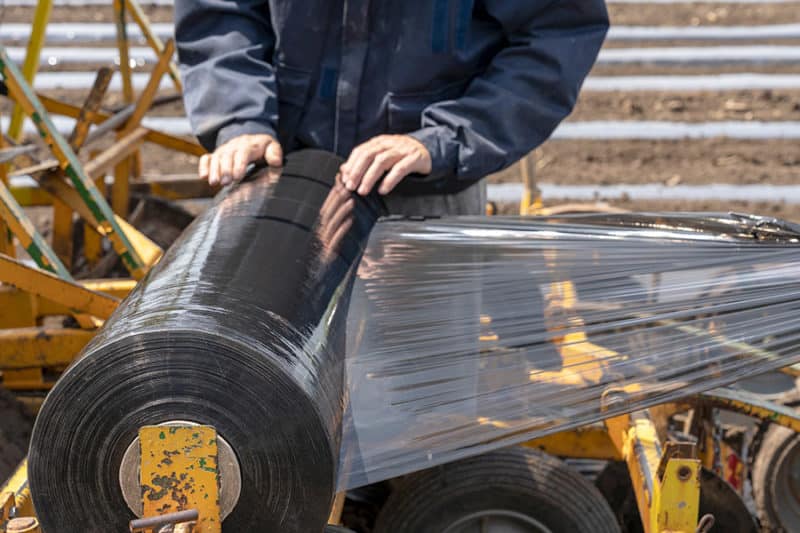
If you water down the sheet compost and then it rains, you’ll end up with a soggy pile. To avoid this, you can cover it with a sheet of black plastic that is loosely weighted down at the sides.
Using black plastic will increase the temperature of the pile and encourage faster decomposition. It also has the benefit of stopping nutrients from running out when it rains.
6. Consider a Cover Crop
Some gardeners like to use a cover crop or a nitrogen-fixing crop. You could add the clover seeds or another type of cover crop to the top of the lasagna garden. They’ll sprout quickly in the right environment, and adding a cover crop helps the material to break down faster and also fixes the nitrogen in the pile.
Put Sheet Mulching to Work in Your Garden
Sheet mulching might go by many names, but they all mean the same thing – an easy way to create areas for planting on your property with nutrient compost and little work. Keep it simple, layer the materials, and don’t forget the cardboard and newspaper!
